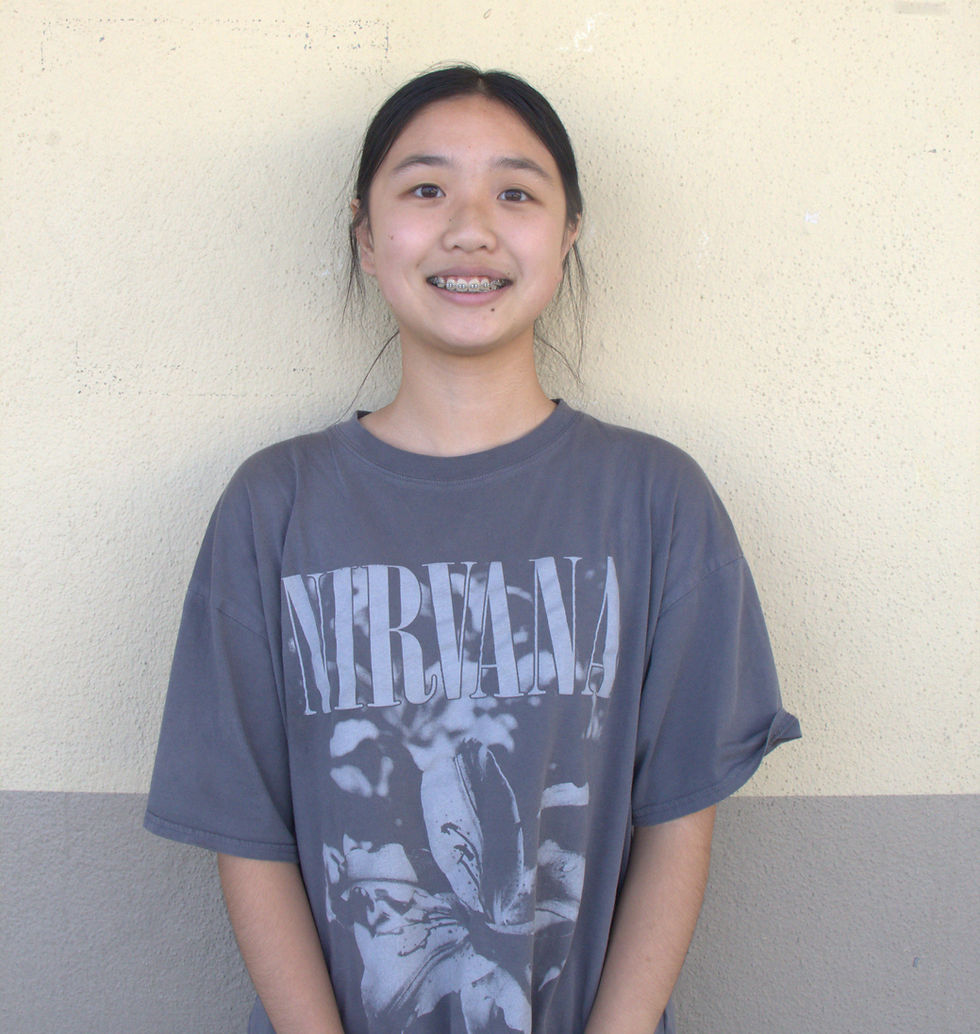From Goodall to Global Hope
- Rachel Lee
- Nov 12
- 4 min read
By Mahika Khosla Nov. 12, 2025
Within the steep mountainous ranges and lush tropical forests of Gombe, Tanzania, a woman with her binoculars, sketchbook and compass sits quietly in observation on a log against layers of fallen leaves and twigs. In front of young Jane Goodall, ten hippos dip their toes into Lake Tanganyika, a dung beetle mourns for his dead mother and two male hummingbirds sing beautifully for the female hummingbird’s attention.
What captures Goodall’s interest the most, however, are the chimpanzees, who strip leaves from twigs to catch termite, engage in affectionate behavior and sometimes fight over territory. To Goodall, the chimpanzee's resemblance to human behavior spoke to her heart.
Goodall, British primatologist and conservationist, passed away on October1 at the age of 91 while on her 2025 USA Fall Tour. The day she passed away, she planned to plant 5,000 trees with thousands of children around wildfire burn zones in the Los Angeles area. Following Goodall’s death, the tree-planting ceremony went on as planned, and the first tree was planted in her name.

Goodall’s career began with her first read of Edgar Rice Burroughs’ “Tarzan of the Apes.” 10-year old Goodall became enthralled by the wild animals in Africa and yearned to dedicate her life to exploring them. When Goodall was 23, she met Louis Leakey, a Kenyan-British palaeoanthropologist who dedicated his life to proving that humans first developed in Africa. Impressed by Goodall’s knowledge and passion, Leakey hired Goodall as his secretary and took her to the forests of Gombe. Since women were prohibited from entering the forest alone, Goodall’s mother accompanied her in the forest for several months. Throughout Goodall’s career, her mother continued encouraging her to pursue her dreams and taught Goodall that perseverance is key to achieve her goals.
Supported by her loved ones, Goodall strengthened her relationship with the forest for six decades. Instead of performing anatomical dissection and controlled laboratory experiments, Goodall chose immersive methods and humanized her subjects, giving chimpanzees proper names instead of labelling them with numbers.
Though some critics argued that Goodall was too emotionally attached to the chimpanzees, the time Goodall spent with chimpanzees helped her see that primates possess distinct personalities and higher-level intelligence, including the ability to craft intricate tools. She discovered that animals have socially and emotionally complex processes and societies—characteristics previous scientists believed only humans were capable of. Ultimately, Goodall contributed to several groundbreaking discoveries, rewriting the standard for how behavioral studies are conducted.
“Goodall’s empathy encourages a more compassionate and connected approach to science, activism and conservation. Younger generations, including me, have witnessed how she promoted ethical research that valued understanding over detachment. Goodall inspires us all to act from genuine care for others and the planet. From her, I am reminded that empathy is key to protecting all life on Earth,” Freshman Siddharth Gandhi said.
Goodall received multiple awards for her storytelling and advocacy alongside her scientific work. When Goodall was 29 years old, the National Geographic magazine published her detailed observations of primates. Later, when Goodall shifted her focus to environmental conservation, she earned the prestigious Templeton Prize in 2021 and the Presidential Medal of Freedom this year.

Goodall’s conservation activism began around the 1970s. Motivated by protecting chimpanzees and their endangered habitats, Goodall aimed to speak for those who may not be able to speak for themselves. As a global advocate, she founded the Jane Goodall Institute in 1977. Meanwhile, the Roots and Shoots program created a setting for educators across 75 countries to receive professional development resources and children to create community projects. In 2002, Goodall became a UN Messenger for Peace—not only to help the UN combat environmental issues, but also to champion hope.
Goodall highlighted the importance of hope throughout her episode of the Netflix documentary “Famous Last Words”—a series where interviews are conducted with some of the world’s luminaries and released only once they have passed away. In her interview, with a glass of vodka and Mr. H, a gifted stuffed monkey, by her side, Goodall emphasized how people are often indifferent to nature because they feel that any difference they make would be too minimal to create meaningful change. To address these sentiments, Goodall elaborated that if every person made conscious and ethical choices throughout their lives, communities can live harmoniously with nature. Goodall ended her interview by saying, “Don’t give up. There is a future for you. Do your best while you’re still on this beautiful Planet Earth.”
“The documentary was not about her scientific breakthroughs, but rather her beliefs on the current social and political state of the world. Learning about this new side of her that is typically hidden from the media was captivating,” Senior Shreya Manu said.
Despite facing decades of controversy for breaking the traditional scientific molds, Goodall fundamentally shifted the path of science. Even after she passed away, her conservation movement continues to grow with the next generation, sustaining the compassion and palpable sense of responsibility Goodall embodied throughout her life. Through her outstanding legacy, Goodall proved that each person can make a tremendous difference.
About the Contributors

Mahika Khosla
staff writer
Mahika Khosla is a senior at Leland High School and a Staff Writer for The Charger Account. Some of her favorite activities are watching Shark Tank, visiting National Parks, and rooting for the Warriors.

Juliana Shin
artist
Juliana Shin is a sophomore at Leland High School and an Artist for The Charger Account. In her free time, she admits to doom scrolling on Pinterest for drawing references or playing with dog, Simba. During other times, she prefers to sleep in and watch horror movies with her mom.























Comments